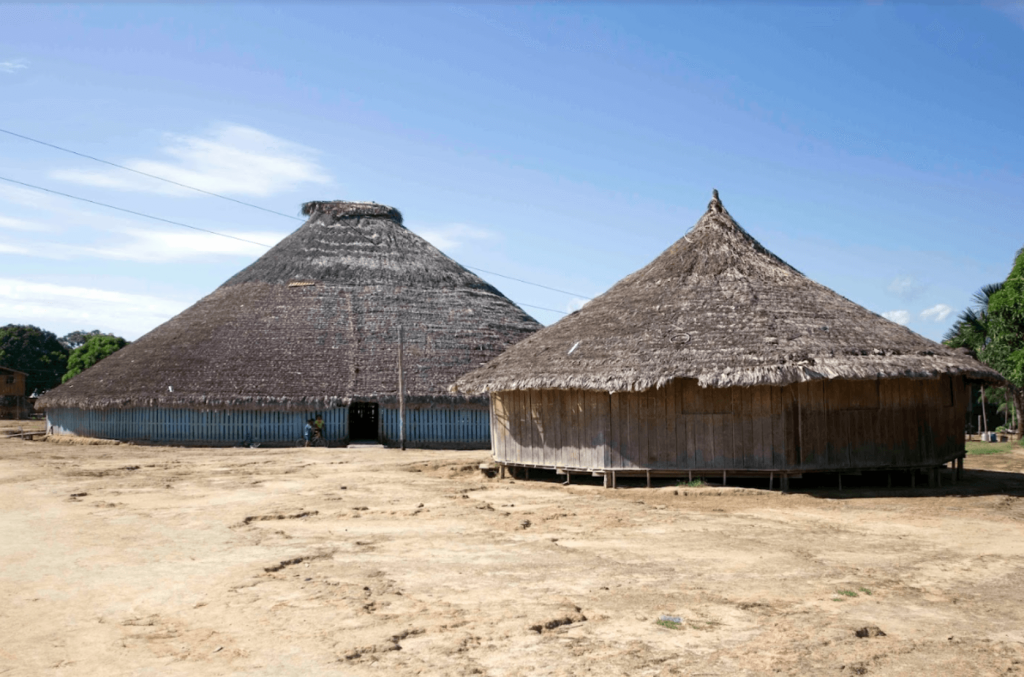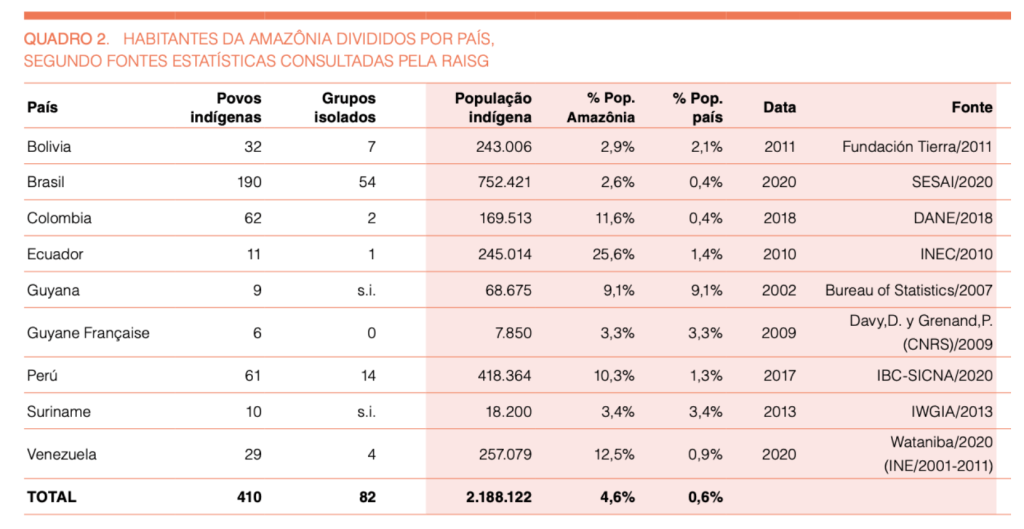TERRITORIES AND INDIGENOUS PEOPLES

WaiWai Village (Para/Brazil). Photo: SESAI/Ministry of Health
THE INDIGENOUS PEOPLE IN THE AMAZON RAINFOREST
Native peoples occupy 28% of the territory of the PanAmazon, 17.7% of which is in areas protected for environmental conservation .
The territories considered indigenous are those of traditional occupation with or without official recognition by the State, as well as other categories of territories designated to indigenous peoples, such as the Indigenous Reserve or Intangible Zone. These territories cover 28% of the Pan-Amazon territory, and most of it, 17.7%, coincides with areas protected for environmental conservation, according to information from the RAISG, Amazonia Under Pressure report. According to the Coordinating Body of Indigenous Organizations of the Amazon Basin (COICA), 511 indigenous groups live there, of which approximately 66 are in voluntary isolation or initial contact – information available on the website colcamazonia.org in August 2022.

Source: RAISG, 2020. Amazônia Under Pressure, 68 pages. (www.amazoniasocioambiental.org)
MAPA INTERATIVO
The land and its natural resources are essential building blocks for any indigenous territory; however, these factors cannot be considered separately from the special spiritual and cultural relationship that unites indigenous peoples with their territories. For this reason, the indigenous claims cross both the dimension of the enjoyment, use, and management of natural resources, as well as the dimension of the control of the political, economic, social, and cultural processes of their territories according to the indigenous peoples’ own norms. Therefore, these territories present themselves not only as a system of resources, but also as a jurisdictional space for the survival of indigenous peoples, not only physically but also culturally.
The territorial rights of indigenous peoples are closely related to the evolution of the rights of indigenous peoples in the international legal system, such as ILO Convention 169, the United Nations Declaration on the Rights of Indigenous Peoples, and the influence of the InterAmerican human rights system. In the member countries of ACTO, the recognition of the territorial rights of indigenous peoples has experienced significant advances in recent decades, although this movement is occurring in a very heterogeneous way in each country. The processes of recognition, titling, and demarcation of indigenous territories take place in almost every country with greater or lesser success, but they all recognize or protect indigenous territories in some way.
Some countries, such as the Plurinational State of Bolivia and Ecuador, have developed legal norms that are closer to the permanent claims of indigenous peoples, such as aspects related to territorial control and natural resources. Despite state initiatives to recognize the territorial rights of indigenous peoples, in general, the countries do not reach the international standards defined in the framework of the United Nations and the Organization of American States, making their application still deficient.
Observe no mapa interativo do Módulo Povos Indígenas, onde se localizam os territórios indígenas na região amazônica e observe as regiões fronteiriças estudadas pelos consultores da OTCA:
